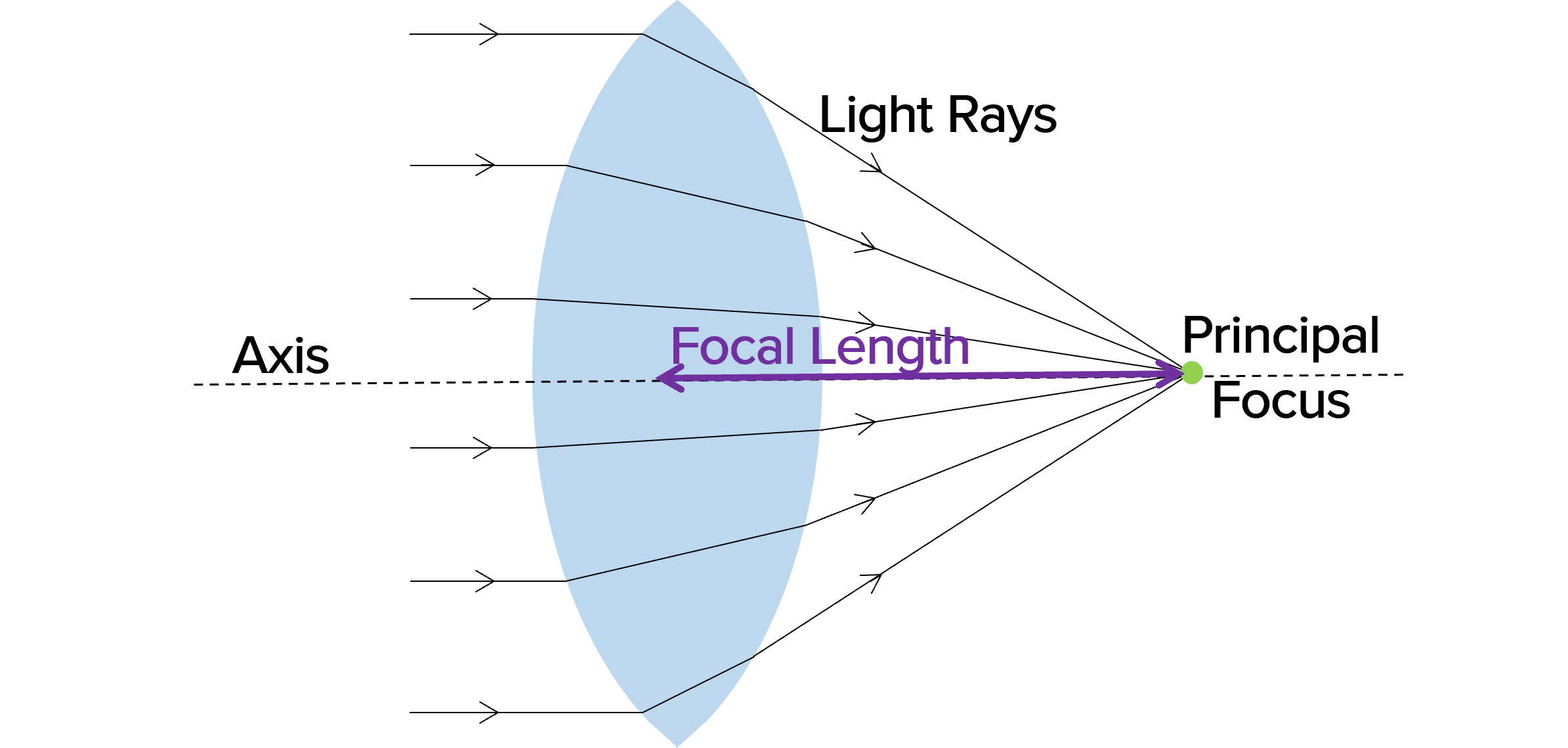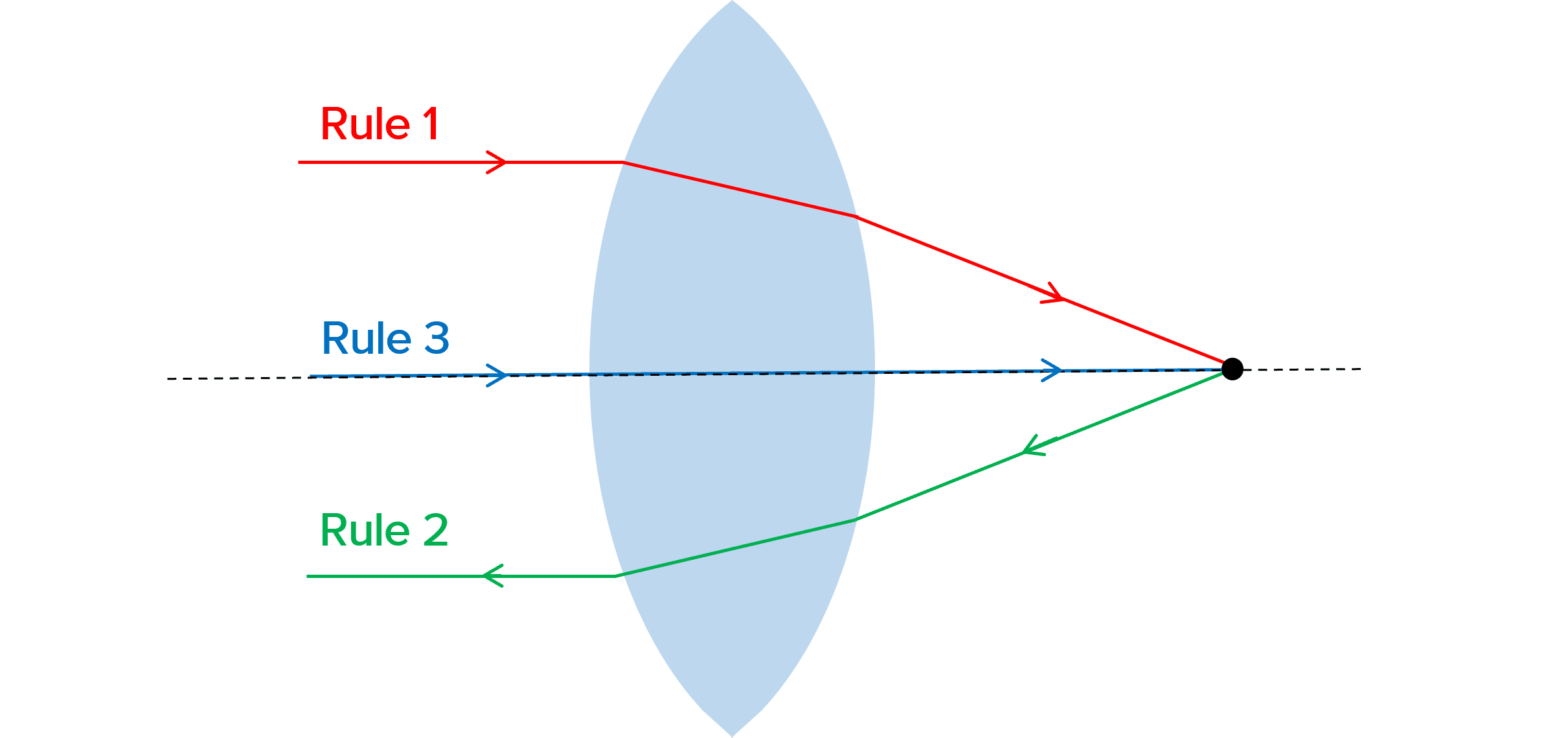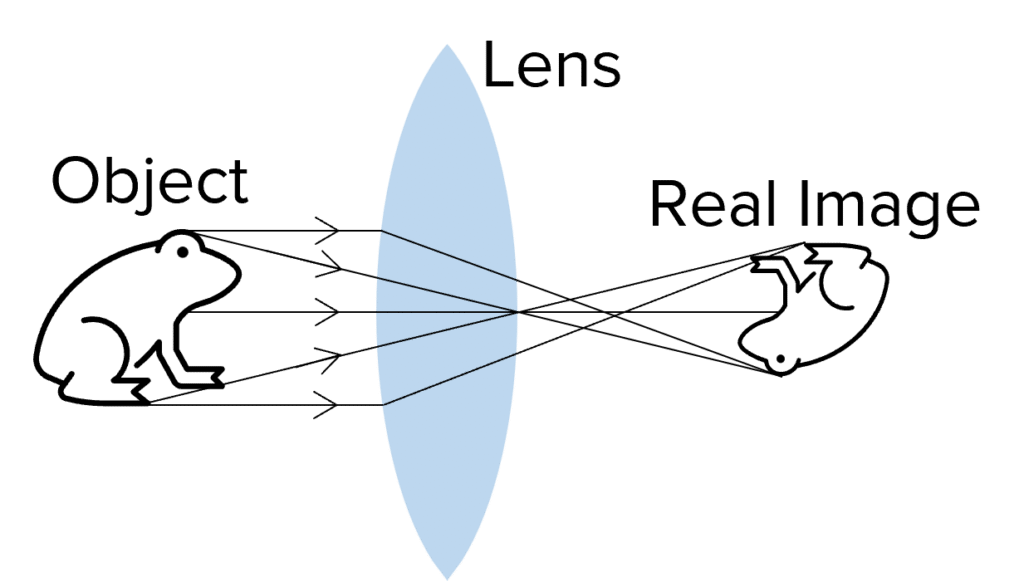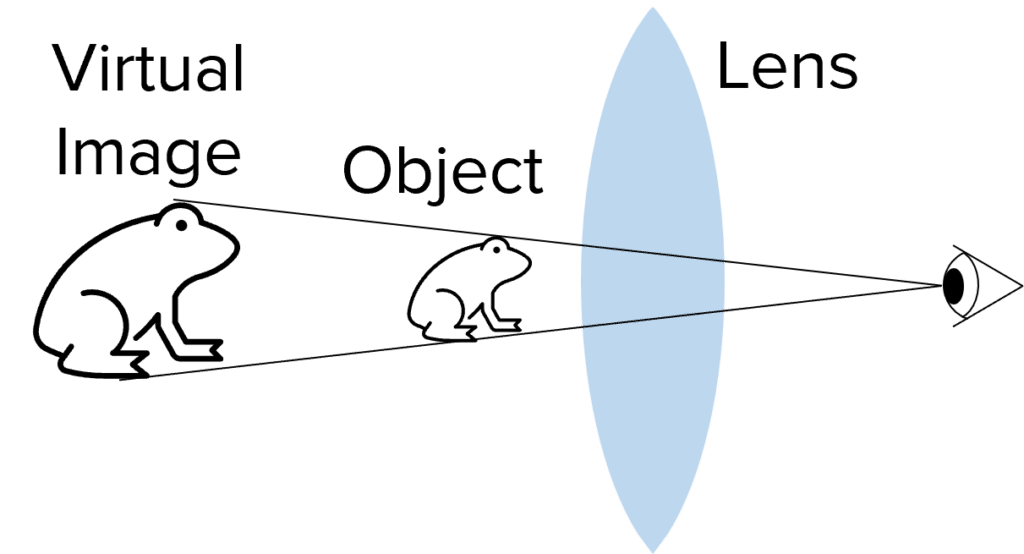Lenses
Lenses Revision
Lenses
Lenses change images by refracting light. Ray diagrams are used to represent the path of light through lenses and can be used to show how images are formed through a lens. Lenses can be either concave or convex.
Convex Lenses
Convex lenses are thicker in the middle than at the edges. Light entering the convex lens is refracted inwards towards a point called the principal focus. There is a principal focus on either side of the lens, for rays entering the lens from each direction. The distance between the centre of the lens to the principal focus is called the focal length. The ray diagram below shows the effect of a convex lens on the path of light rays.

You need to remember the following rules about convex lenses:
- Rule 1: Any ray that enters the lens parallel to the axis will refract through the lens and pass thorough the principal focus.
- Rule 2: Any ray that enters the lens from the principal focus will refract through the lens and leave the lens parallel to the axis.
- Rule 3: Any ray that enters the lens along the axis will continue in the same direction.

Concave Lenses
Concave lenses are thicker at the edges and thinner in the centre. They cause light to diverge, meaning spread out. The principal focus of a concave lens is the point where rays hitting the lens parallel to the axis appear to have come from. We represent this on a ray diagram by tracing virtual rays backwards from the ray leaving the lens. Like a convex lens, there is a principal focus on both sides of the lens.

There are also rules to remember for concave lenses:
- Rule 1: Any ray that enters the lens parallel to the axis will refract through the lens and travel in line with the principal focus so that it appears to have come from the principal focus.
- Rule 2: Any ray that enters the lens, travelling towards the principal focus refracts through the lens and leaves it parallel to the axis.
- Rule 3: Any ray that enters the lens along the axis continues in the same direction.

Real and Virtual Images

When light comes together to form an image, such as on a screen or on the retina (the back of the eye), a real image is formed.
Only convex lenses produce real images.

A virtual image is formed when light rays are diverging, and so the object appears to be in a different place. For example, when you look into a mirror, you see a virtual image. This is because the reflection appears to be behind the mirror.
Concave lenses always produce virtual images. Convex lenses may also produce virtual images.
Magnification
When an object is magnified, a virtual image of the object is created that is larger than the object itself. The image is called a magnified virtual image.
For magnification to occur, the object must be closer to the lens than the principal focus.

You can calculate how much the image has been magnified (increased size) using the following formula:
\text{magnification}=\dfrac{\text{image size}}{\text{object size}}
Magnification is a ratio and so it has no units.
If a virtual image has a negative magnification, this means the image is smaller than the object.
Example: Calculating Image Size Using Magnification
A flower is measured to be 3\text{ cm} tall. A magnifying glass with magnification of 4 is used to view the flower. How tall does the flower appear to be?
[2 marks]
Magnification equation:
\textbf{magnification}=\dfrac{\textbf{image size}}{\textbf{object size}}
Rearrange to find the image size:
\text{image size}=\text{magnification} \times \text{object size} = \textcolor{aa57ff}{4} \times \textcolor{f21cc2}{3} \text{ cm} = \bold{12} \textbf{ cm}
Lenses Example Questions
Question 1: What type of diagram is used to represent light refracting in a lens?
[1 mark]
Ray diagram.
Question 2: Describe the shape of a convex lens.
[2 marks]
A convex lens is thicker at the centre/bulges out in the middle.
And thinner at the edges.
Question 3: State if the following statements are true or false:
a. “A light ray that enters a convex lens along the axis will refract and leave the lens at an angle”.
b. “A light ray that enters a concave lens parallel to the axis will refract through the lens and travel in line with the principal focus”.
c. “Any ray that enters a concave lens along the axis continues in the same direction”.
[3 marks]
a. False.
Any ray that enters a convex lens along the axis will continue in the same direction.
b. True.
c. True.
Question 4: What is the difference between a real and virtual image?
[3 marks]
A real image is formed when light comes together to form an image.
A virtual image is formed when light rays are diverging, and so the object appears to be in a different place.
Question 5: A ladybird is 5 \text{ mm} long. Under a magnifying glass, the ladybird appears to be 6 \text{ cm} long. What is the magnification of the magnifying glass?
[3 marks]


